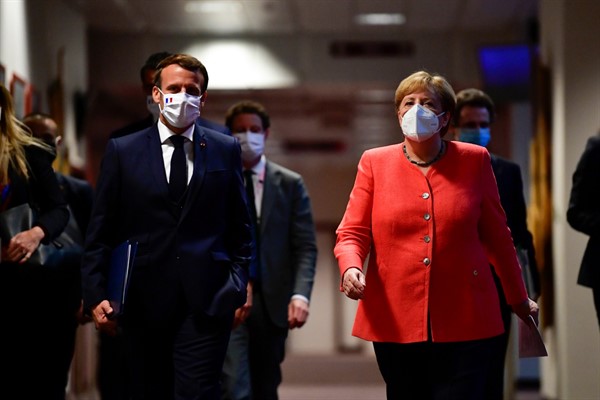If the European Union were a cartoon, it would resemble an episode of Wile E. Coyote and the Road Runner. The EU would be Wile E. Coyote, furiously paving a road with the help of some mail-order Rube Goldberg machine, patch by patch, just ahead of the car he is driving. The Road Runner would be the course of history speeding up alongside him, then zooming off into the distance.
This half-finished structure constantly driven forward by the urgent necessity of events is no accident. It was one of the implicit assumptions of the EU’s early architects and builders, who understood that erecting an architecturally sound and complete European construction was not possible in one fell swoop. This was in part due to the wide divergences in member states’ interests and enthusiasm, with the most recent fault lines being a North-South divide over fiscal discipline and solidarity, and an East-West divide over the rule of law. But it was also because this elite vision of European integration far exceeded the appetite of many Europeans themselves.
The next best option, as many Europhiles openly acknowledged until even about 15 years ago, was to build Europe step by step, each time laying enough of a foundation to make it very difficult to undo, but not enough to preclude the need to build more. The result was a hybrid EU, with expanding powers over trade policy and market regulation, but none of the sovereign authority necessary to shepherd Europe through a crisis or become a strategic actor internationally.

